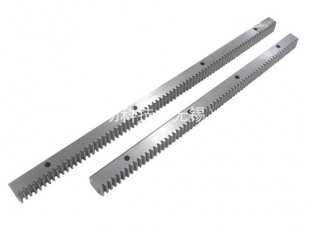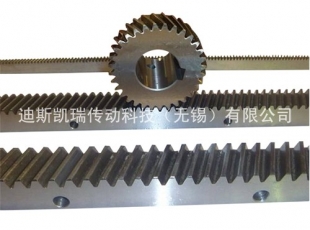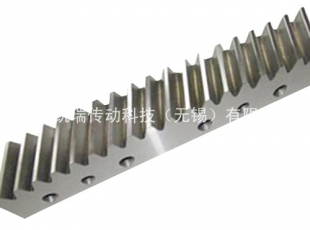Precision gear rack transmission calculation and basic knowledge!
Gear processing:
Gear size
ISO (Standardization Organization) stipulates that the unit of gear size shall be modulus. However, in fact, there are other ways to indicate the size of the gear.
modulus
Modulus M = 1 (P = 3.1416)
Modulus M = 2 (P = 6.2832)
Modulus M = 4 (P = 12.566)
The pitch (P) can be obtained by multiplying the modulus by the circumference. Tooth spacing is the length between two adjacent teeth. P = circumference X modulus (pi m)
CP (Zhou Jie)
The circumferential pitch is the circumferential pitch. That is the pitch (P).
For example, gear with pitch of CP5CP10CP15CP20 can be made with pitch of CP5CP10CP15CP20.
Conversion relation M = cp/pi with modulus
DP (diameter section)
The English is Diametralpitch.
According to ISO standard, the length unit is millimeter (mm). But in the United States, Britain and other countries, inches have been used as a unit of length. DP is used to represent the size of gears in these countries.
Conversion relation with modulus m=25.4/DP
pressure angle
Determine the parameters of gear tooth profile. That is, the inclination of the gear tooth surface.
Press (a) generally adopts 20 degrees. But sometimes customers'drawings are 14.5 degrees, 15 degrees and 17.5 degrees, so these should be paid attention to.
Tooth number
The modulus, pressure angle and tooth number described above are the three basic parameters of gears. On the basis of these parameters, the dimensions of each part of the gear are counted.
Tooth Height and Thickness
The height of the gear is determined by the modulus (m). Here I will briefly introduce the tooth height (h)/top height (ha)/root height (hf).
The tooth height (h) is the height from the top of the tooth to the root of the tooth.
H = 2.25m (= top height + root height)
The top height (ha) is the height from the top of the tooth to the indexing line (midline). (The indexing line is the baseline for calculating rack size)
Ha=1.00m
The root height (hf) is the height from the root to the indexing line (midline).
Hf=1.25m
The base of tooth thickness (s) is half of the pitch (P).
S = Pi m/2 P = Pi M
Spur gear
So far, I have introduced the basic parameters of gears to you. Next, we will introduce them.
Name and dimension calculation of various parts of spur gear and rack
The indexing circle diameter (d) of the gear is the parameter determining the size of the gear.
Dividing circle diameter (d) d = ZM
Apical circle diameter (da) Da = D + 2m
Root circle diameter (df) DF = d-2.5m
The top circle and root circle introduced here can be seen directly, but the indexing circle can not be seen directly on the actual gear. Because the indexing circle is supposed to determine the size of the gear.
helical gear
Features: Higher strength, less noise and vibration than straight teeth
The disadvantage is that thrust is generated in the axis direction.
The relationship between end modulus (mt) and normal modulus (mn)
Mt=mn/cosb
Dividing circle diameter d=zmn/cosb
Material Science:
S45C (Carbon Steel for Mechanical Construction)
S45C is the representative of medium carbon steel (steel) with 45% carbon content, because it is very easy to purchase, spur gears, helical gears, racks, bevel gears, worm gears and other gears use this material.
SCM440 (chromium-molybdenum alloy steel)
Medium carbon alloy steel with carbon content C=40% and chromium/molybdenum composition. It has higher strength than S45C, and can be hardened by quenching or quenching at high frequencies. It can be used to manufacture various gears.
What is quenching and tempering treatment?
Quenching and tempering is a heat treatment which combines quenching and high temperature tempering to adjust the hardness/strength/toughness of steel.
Because quenched and tempered materials and products need to be machined, the hardness is not as high as that after quenching.
What is high frequency quenching?
Hardening of carbon steels with a carbon content of more than 35% such as S45C or SCM440.
It should be noted that after high frequency treatment of gears, the hardness of the tooth surface and the tooth top can meet the requirements of use, but the hardness of the tooth root can not reach the hardness of quenching. The hardness is lower than that of carburizing and quenching treatment. After high frequency quenching, the accuracy of gears decreases. As a high precision gear, it needs to be grinded when it is used.

The cutting-edge gear processing technology, brilliant fight!
Publication time:2019-10-09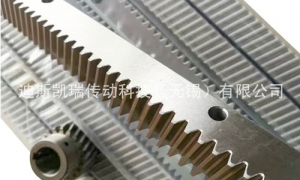
Development Trend of Gear Processing Technology and Equipment
Publication time:2019-10-09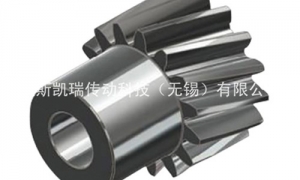
Some Key Points to Be Noticed in Gear Processing and Manufacturing
Publication time:2019-10-09
Why do we always want to do Gear processing, but we cant do it well?
Publication time:2019-10-09
Development Trend of Gear Processing Technology and Equipment
Publication time:2019-10-09
Introduction of Gear Processing
Publication time:2019-10-09
Common Defects and Solutions in Gear Hobbing
Publication time:2019-10-09
Several Key Technologies in Rack Grinding Machine
Publication time:2019-10-09
What is gear machining?
Publication time:2019-10-08
The Advantage of Rack Processing Roller Rack in Motion Mechanism
Publication time:2019-10-08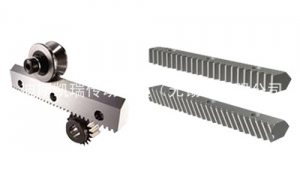
Introduction to the Characteristics and Parameters of Rack Machining Rack
Publication time:2019-10-08
Common Materials for Gear Processing
Publication time:2019-10-08
1The cutting-edge gear processing technology, brilliant fight!
2019-10-09

2Development Trend of Gear Processing Technology and Equipment
2019-10-09

3Some Key Points to Be Noticed in Gear Processing and Manufacturing
2019-10-09

4Why do we always want to do Gear processing, but we cant do it well?
2019-10-09

5Development Trend of Gear Processing Technology and Equipment
2019-10-09

6Introduction of Gear Processing
2019-10-09


